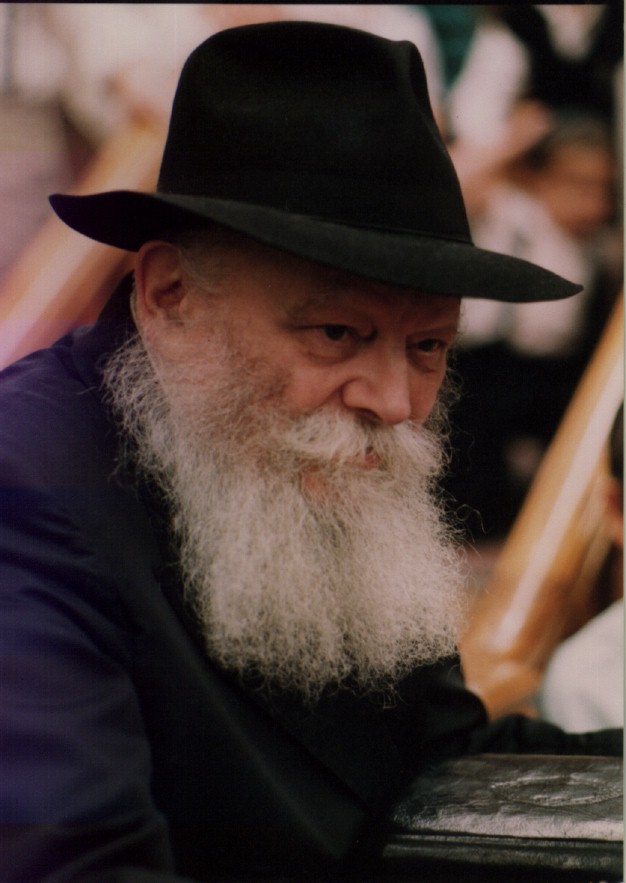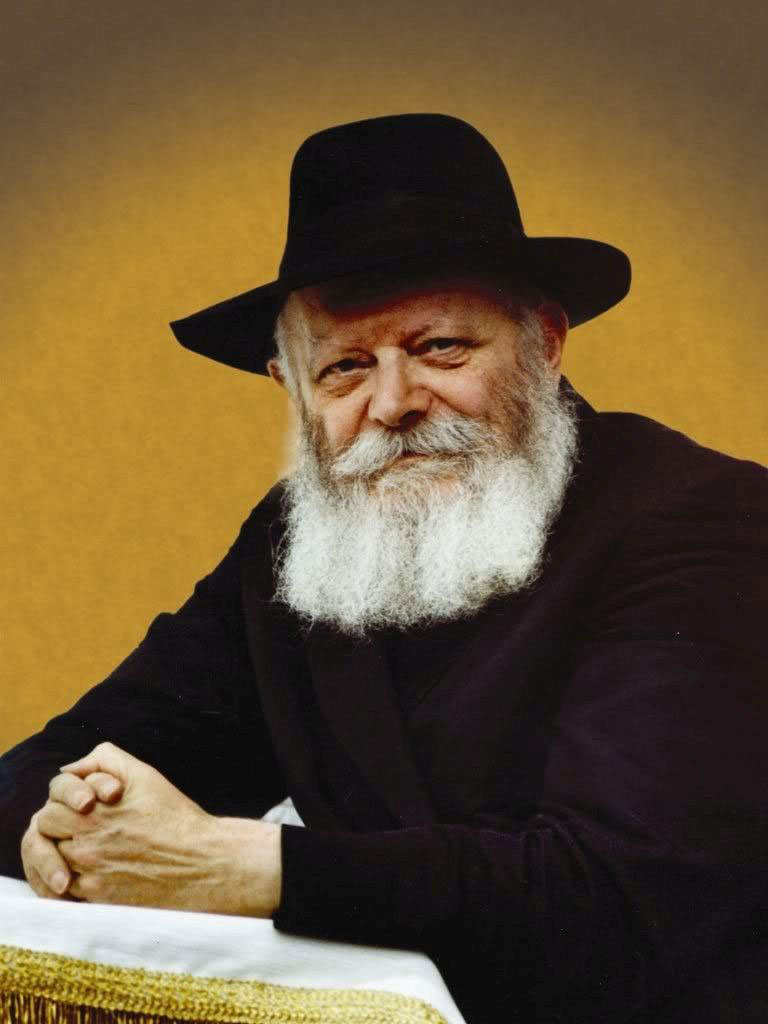ASK THE RABBI
Rabbi Lipskar's weekly d'var torah
Vayeitzei
This week’s parshah opens with the first true exile in Jewish history. Yaakov, our third Patriarch and the father of the entire Nation of Israel, is forced to flee everything familiar, his home, his parents, the sacred environment of his youth and run for his life. Though he heads toward family, he is walking straight into danger. Lavan’s world was spiritually corrupt, morally twisted, and, as we recall in the Haggadah, capable of uprooting the entire future of the Jewish people.
Yaakov begins this journey with nothing but a staff in his hand. Elifaz, sent by Eisav to kill him, spares him only when Yaakov convinces him that someone who has lost everything is considered “as if dead.” So Yaakov literally buys his own life by surrendering the last of his belongings. With nothing but faith and uncertainty, he steps into the unknown.
As he begins what he later describes as a life of “few and difficult years,” Yaakov turns to G-d with a simple plea: “Be with me.” And G-d responds, “I will not abandon you.” That promise becomes the foundation of every exile we have endured, from Egypt to Rome to the journeys of our own families. Chassidus teaches that the first exile is not geographical but spiritual: the moment the soul leaves its pure, transcendent state to enter a physical body and a challenging world. The soul immediately encounters resistance, materialism, ego, struggle, relationships, and the temptations of the animal soul. And then come the external exiles of history.
Yet Yaakov’s story teaches us that exile is not just a descent; it is a laboratory for greatness. It is in Lavan’s house, the darkest environment in the Torah, that Yaakov builds the future of our people. It is there that the Tribes of Israel are born. It is there that he becomes wealthy and spiritually elevated. It is there, with a stone as his pillow, that he dreams of a ladder reaching from earth to heaven and discovers his mission to bridge the two.
And it is exactly here, in this same parshah, that the Torah gives us a scene that feels almost ordinary but contains one of the deepest lessons of all. Yaakov arrives at a well and finds several shepherds waiting with their flocks. A large stone covers the well, and Yaakov wonders why they are simply standing around. “Why not move the stone, draw water, and continue?” Their answer is immediate: “We cannot. It is impossible until everyone gathers.” But then Yaakov steps forward and rolls the stone away by himself, as lightly as lifting a pebble.
Our Rabbi’s explain that this is not a story about physical strength but about human psychology. To the shepherds, the stone was a barrier. To Yaakov, it was just a task. What one group believed impossible, Yaakov believed possible. And both beliefs became true. The well represents the reservoir inside each of us, our creativity, resilience, emotional depth, spiritual strength, and potential for growth. Every person has a well. Every community has a well. And every well has a stone. For some, that stone is fear; for others, fatigue, insecurity, or the quiet inner whisper that says “I cannot.” If you decide the stone is a boulder, it becomes one. If you decide it is a pebble, something you can move with effort and faith, suddenly it is movable.
“Lo nuchal—we cannot,” the shepherds declared. And because they believed it, their words became reality. Yaakov believed otherwise, and that belief opened the well. Our limitations are often created long before our bodies fail. They appear when the mind decides something is impossible. We see this everywhere: people who dream of a new path in life, studying, building, changing, healing, reconnecting spiritually, yet immediately list reasons it cannot happen. The stone becomes enormous. Yet history is filled with individuals who refused to accept “Lo nuchal” and discovered strength far beyond their circumstances. They looked at the same stone and saw something they could lift.
What is true for individuals is equally true for communities. Every Jewish community faces its own stones, disconnection, distraction, shifting schedules, spiritual fatigue, or the misguided belief that people do not care. But in every community lies a well filled with immeasurable potential: Jewish souls, yearning for connection and meaning, capable of unity, growth, and renewal. If we see only the stone, nothing moves. If we remember the well beneath it, the stone becomes only a pebble that can be moved with courage and vision.
Yaakov’s entire life is a model of this mindset. He never accepted the premise of impossibility. He rolled stones from wells, outmaneuvered Lavan, dreamed of ladders reaching heavenward, endured injustice, built a family, and wrestled an angel through the night. At the breaking of dawn, the angel tells him, “You struggled with divine and human forces and you prevailed.” Vatuchal. You were able. You insisted it was possible, and so it became possible.
As we look at our world with its complexity, challenges, and moments of darkness, it is easy to feel overwhelmed. But the story of Yaakov reminds us that exile is not an ending; it is fertile ground for discovery and strength. The light that follows darkness is brighter than the light that preceded it. The redemption that follows struggle is deeper because of what we faced along the way. And the stones that cover our inner wells often move the moment we decide to try.
May this Shabbos give us the courage of Yaakov, the clarity to see our challenges as stepping stones, and the strength to roll away the stones that block our deepest potential. May we uncover the well within ourselves and within our community, and may we discover just how much becomes possible the moment we stop saying “I can’t” and start saying “I can.”
Wishing you a peaceful Shabbos and a week of blessing, growth, and renewed strength.
Rabbi Zalman Lipskar
(adapted from the writings of my Father and Teacher, Rabbi Sholom D. Lipskar, obm)
The Shul Pushka Campaign

It's the little things in life that count. G-d fills the world every moment with His divine energy. Tzedakah is one of the special and significant ways to create an all-encompassing Mitzvah, and in today's world, we need more Mitzvot than ever. It doesn't matter where or how much you give, just make Tzedakah part of your day.
The Shul provides beautiful Pushkas (charity boxes) to the community and to all those that would like to participate in the important Mitzvah of Tzedakah. To request a Shul Pushka please call The Shul Office at 305-868-1411 or fill out the form below.
To Learn More About The Meaning of Tzedakah Click Here
Jewish Holidays
All Jewish holidays begin the evening before the date specified on most calendars. This is because a Jewish "day" begins and ends at sunset, rather than at midnight. If you read the story of creation in Genesis Ch. 1, you will notice that it says, "And there was evening, and there was morning, one day."
From this, we infer that a day begins with evening, that is, sunset. Holidays end at nightfall of the date specified on most calendars; that is, at the time when it becomes dark out, about an hour after sunset.
UPCOMING JEWISH HOLIDAY
For more information Click here
Project 33154

Project 33154 is a community wide program to create a neighbor to neighbor Jewish experience. The initial case study started Chanuka 2002 where 10 young Yeshiva boys visited every home in Bay Harbor to identify which ones were Jewish and give them the necessary items (Menorah, Candles, Guides etc.) for the Holiday of Chanuka.
Over 250 Jewish Homes were identified together with a color coded map of Members, Non-Members and Unaffiliated Jews. Over the next Purim and Passover the same idea was used in the Surfside and Bal Harbour area and over 800 new Jewish homes were contacted and had a taste of The Shul.
Block Shluchim
Together with color coded map each neighborhood was split up into different areas that include a lay leader from The Shul.
Before each Yom Tov The Shul prepares a special food package which promotes holiday awareness.
Rosh Hashana, Yom Kippur, Succot, Chanukah, Purim, Pesach andShavout
Every newly identified Jewish household in the Bal Harbour, Bay Harbor Islands and Surfside areas has been contacted with thousands of Apples and Honey packages, Chanukah kits and Purim Mishloach Manos and food packages distributed this year.
Over 350 pounds of hand-made Shemurah Matzo (that’s about 2,450 pieces of matzah) has been distributed throughout 33154. If you are new on the 33154 area, please let us know so you can be included in this amazing and inspiring Jewish Program.
Send a letter to the Rebbe זי"ע

Throughout his lifetime, the Rebbe received hundreds of letters every day, from people of every conceivable background, occupation and faith. Today people continue to send letters to be placed at the Ohel for the Rebbe's guidance and intervention On High, in the age-old tradition of written prayer petitions at our holiest sites
Whether referring to one's own self or mentioning someone else's name in a letter, one should always include the name and mother's name (e.g. Isaac the son of Sarah) of both the one(s) who are in need of blessing and the signer.
http://www.chabad.org/library/article_cdo/aid/761128/jewish/Why-Use-the-Mothers-Name-When-Praying-for-Someone.html
http://www.ohelchabad.org/templates/articlecco_cdo/aid/78445It is preferable to use one's Jewish name. (Customarily gentiles use their father's name.) Letters can be written in any language. You can fax directly to the Ohel at: (718) 723-4444 Or you can use the form below to have the rabbis at Ohel Chabad Lubavitch http://www.ohelchabad.org/templates/articlecco_cdo/aid/78445personally bring your prayers to the Rebbe’s resting place.
The Rebbe

The Lubavitcher Rebbe, Rabbi Menachem Mendel Schneerson of righteous memory, the seventh leader in the Chabad-Lubavitch dynasty, is considered to have been the most phenomenal Jewish personality of modern times. To hundreds of thousands of followers and millions of sympathizers and admirers around the world, he was -- and still is, despite his passing -- "the Rebbe."
Whether referring to one's own self or mentioning someone else's name in a letter, one should always include the name and mother's name (e.g. Isaac the son of Sarah) of both the one(s) who are in need of blessing and the signer.
Click Here to Know More Click Here.



